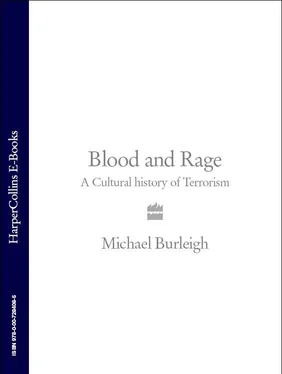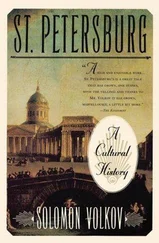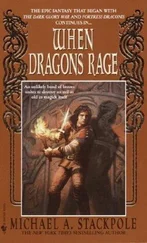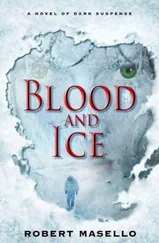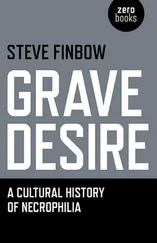Less well known, about a thousand IRA men were also active in mainland Britain, particularly London, Liverpool and Tyneside. Their wilder schemes included plans to kill Lloyd George, to truck-bomb the House of Commons or to poison the horses in Buckingham Palace. In practice, a hundred IRA men caused extensive damage to Liverpool’s docks, destroying nineteen warehouses. Between February and July 1921 they launched co-ordinated arson attacks on farms around London and Liverpool, in response to British reprisal burnings of farms of IRA sympathisers in Ireland, as well as extensive attacks on telegraph and telephone lines and railway signal boxes. Such attacks caused an estimated £1,000,000 damage. The IRA stalked high-profile military and police targets, notably Basil Thompson, the head of the Special Branch responsible for political criminality. On 22 June 1922, two young IRA men, Reginald Dunne and Joseph O’Sullivan, shot dead field marshal Sir Henry Wilson as he reached his doorstep after spending the morning unveiling a war memorial at Liverpool Street station. O’Sullivan had a wooden leg after being wounded while serving in the British army in the same war Wilson was commemorating. Wilson had once snubbed Michael Collins at a 10 Downing Street meeting. Despite shooting two policemen and a civilian who pursued them, the two assassins were captured, and in August were tried and executed. The British responded to this campaign by giving about fifty prominent figures armed bodyguards, installing barriers around government buildings and parliament, and from time to time deploying soldiers to guard railway lines and telegraph poles. 19
By that time, the IRA had effectively run out of ammunition and weapons, while the British had succeeded in capturing about 5,500 of their estimated 7,500 active personnel. Collins estimated that within about three weeks the IRA would not be in a position to fight. Worse, IRA intelligence told the leadership that the British were thinking of trebling the number of troops in Ireland while imposing martial law. This inclined the IRA, which had long been talking with the British government through clerical back channels, to a political settlement, albeit one that many of them would regard as temporary. A truce in the summer of 1921 led to negotiations in Downing Street which de Valera was shrewd enough to leave in the hands of Collins. Three months of talks resulted in the establishment of the twenty-six-county Irish Free State, its autonomy qualified by various residual links to the British Crown akin to those which connected the Dominions of Canada or South Africa to the motherland. Six, rather than nine, counties of Ulster would remain in the United Kingdom, although Collins hoped that when boundaries were drawn this would be reduced to an unviable, and indubitably Protestant, three. The readiness of the British government to treat with individuals it had recently dismissed as murderers was noteworthy, with the lengthy talks themselves generating all manner of human sympathies among the negotiating parties. Just in case they failed, Lloyd George threatened to wage all-out war with the entire resources of the British empire within three days.
The Treaty was adopted in the Dáil by a narrow majority of 64 to 57, indicating how far the issue served to aggravate pre-existing personal and political animosities. Those who backed the Treaty, including Michael Collins and Arthur Griffith, thought that a bird in hand was better than one in the bush, and that full independence could be achieved in due course. In these circles, the Protestants of the six northerly counties were a second-order issue – an inexplicable extension of the industrial civilisation of Glasgow or Manchester in the otherwise Irish pastoral idyll. Opponents were more exercised by the exclusion of the six counties, or by the failure to achieve a fully independent republic based on the renunciation of the symbolic features of union that the Free State still retained through Dominion status. A general election in June 1922 overwhelmingly confirmed the pro-Treaty view. Government structures were based on British exemplars, although significantly there was no Ministry of Education. That was the quid pro quo for endorsement of the Free State by the Catholic Church, which already envisaged it as the Atlantic bastion of anti-modernity that it would remain for the next fifty years. Archbishop Walsh voted Sinn Féin.
Since the purest of the republican pure derived their spiritual legitimacy from the martyrs of 1916 and back beyond to a Catholicised Wolfe Tone in 1798, rather than from democratic elections, they ventured ahead with their military quest for the establishment of an independent republic. Roughly 50 per cent of the IRA merged into the newly formed Irish army, while the remaining half comprised Irregulars or Republicans – the forerunners of the modern IRA. These were the armed temple virgins of the flames of Padraig Pearse. 20
In March 1922 IRA men opposed to the Dáil’s decision took over buildings in Dublin, in a symbolic re-run of the Easter Rising. This was hopeless because the Free State’s army was deployed against them, using arms provided by the British. The British army even lent it a couple of cannon. ‘What’s artillery like?’ asked one IRA man of a veteran of 1916. ‘You get used to it, it’s not bad,’ replied his comrade. The Dublin insurgency was easily suppressed, as it was in other cities and towns. The IRA reverted to the sort of rural guerrilla war it and its pro-Treaty foes had recently fought against the British, with one unit happening to ambush and kill Michael Collins on 22 August 1922. Ironically, the Provisional Government resorted to measures indistinguishable from the British to win what had become a civil war – although unlike the British it had the support of the Catholic Church, which eagerly excommunicated the IRA. A special-powers resolution perpetuated the draconian military reprisals that had commenced with the British Restoration of Order in Ireland Act two years before. A spiral of violence recommenced. Some seventy-seven republican captives were executed, regardless of whatever services they had performed on behalf of Irish patriotism. When the Irish authorities shot the fifty-two-year-old republican writer Erskine Childers, the IRA announced that members of the government and its supporters were fair game.
The first victim was Seán Hales, a pro-Treaty deputy to the Dáil. The Provisional Government responded to his killing by executing four republican prisoners, thereby putting a stop to this particular cycle of publicly acknowledged violence. However, it did not stop murderous warfare between the IRA and Free State troops. Some of the latter seem to have killed IRA prisoners by tying them up and exploding mines beneath them. Perhaps as many as four to five thousand people were killed in the civil war, the majority of them IRA personnel, as recorded Free State military losses were about eight hundred. In May 1923 the IRA declared a ceasefire and hid its arms, prompting president William T. Cosgrave to remark that the organisation’s members might need them ‘any time they took it into their heads to interview a bank manager’. Be that as it may, in republican circles the Rising became a foundational myth that one criticised at one’s peril. In 1926 the working-class Protestant playwright Sean O’Casey did just that, in The Plough and the Stars , performed in the national Abbey Theatre a decade after the Rising. The wives and widows of republican martyrs, including the mother of Pearse, created pandemonium on stage as the Irish tricolour was paraded in a pub to the ghostly tones of Pearse proclaiming his republic. O’Casey left Ireland and never returned. 21
One inadvertent consequence of the civil war that convulsed the South was that it enabled Ulster Unionists – the secession within the secession – to consolidate partition by forming the state of Northern Ireland. This was accelerated by the quiet decampment of a third of southern Protestants after an IRA campaign of sectarian murder less well known than ugly Unionist riots against Catholics in Belfast. The ambiguities and unsuppressed hopes emitted by the southern Treatyites had unfortunate repercussions in the North. Catholic nationalists abstained from political involvement in the crucial formative years of Northern Ireland, a stance that enabled the Unionist majority to abolish proportional representation and to gerrymander its local government arrangements. This fed a sense of Catholic nationalist grievance that the victims themselves were partly responsible for because of their wish to maintain the provisional character of the new northern polity. This still exists as part of the United Kingdom in the early twenty-first century, with Belfast, but not Dublin, on British television weather maps. 22
Читать дальше
